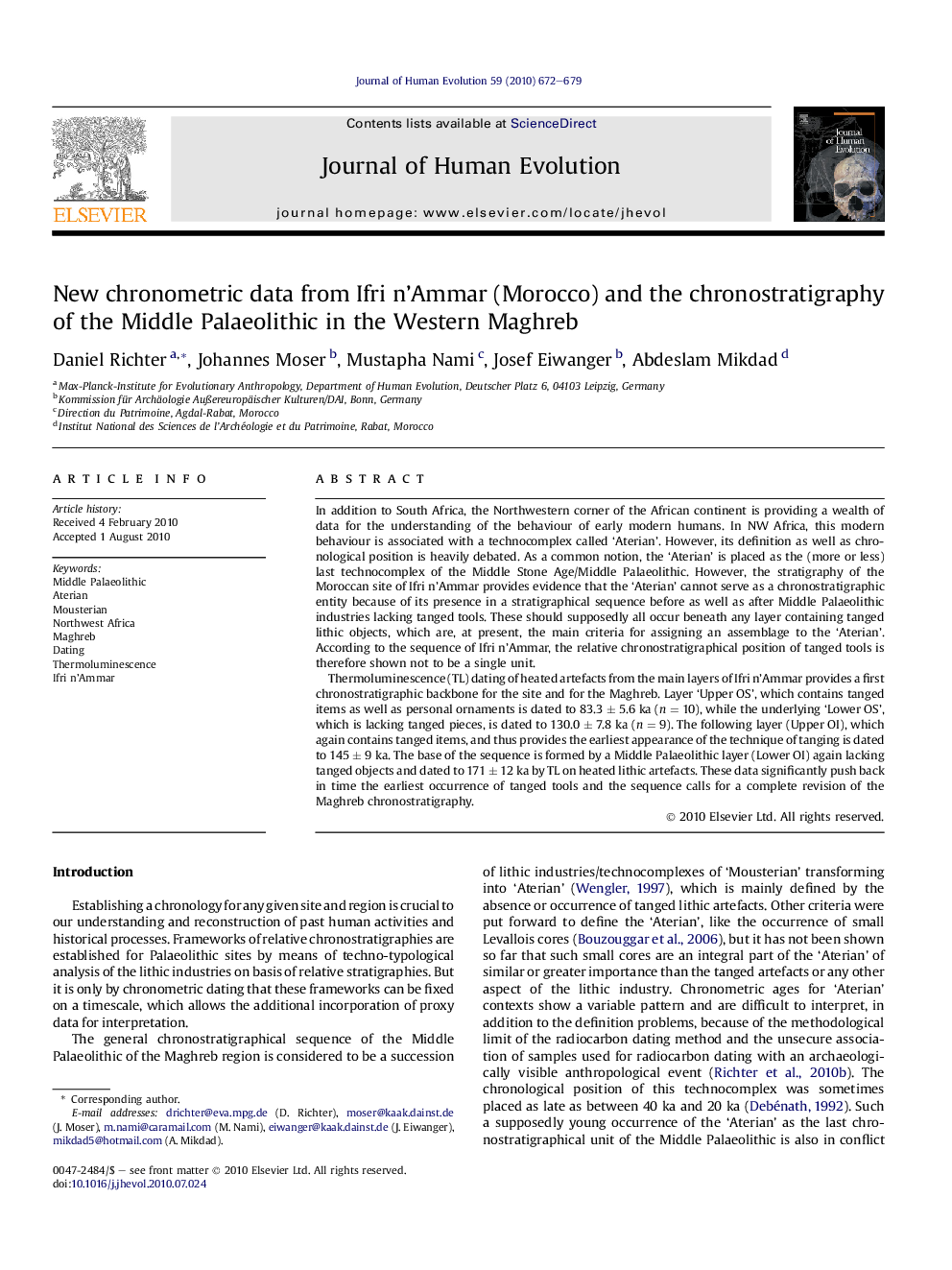| کد مقاله | کد نشریه | سال انتشار | مقاله انگلیسی | نسخه تمام متن |
|---|---|---|---|---|
| 4556637 | 1329492 | 2010 | 8 صفحه PDF | دانلود رایگان |

In addition to South Africa, the Northwestern corner of the African continent is providing a wealth of data for the understanding of the behaviour of early modern humans. In NW Africa, this modern behaviour is associated with a technocomplex called ‘Aterian’. However, its definition as well as chronological position is heavily debated. As a common notion, the ‘Aterian’ is placed as the (more or less) last technocomplex of the Middle Stone Age/Middle Palaeolithic. However, the stratigraphy of the Moroccan site of Ifri n’Ammar provides evidence that the ‘Aterian’ cannot serve as a chronostratigraphic entity because of its presence in a stratigraphical sequence before as well as after Middle Palaeolithic industries lacking tanged tools. These should supposedly all occur beneath any layer containing tanged lithic objects, which are, at present, the main criteria for assigning an assemblage to the ‘Aterian’. According to the sequence of Ifri n’Ammar, the relative chronostratigraphical position of tanged tools is therefore shown not to be a single unit.Thermoluminescence (TL) dating of heated artefacts from the main layers of Ifri n’Ammar provides a first chronostratigraphic backbone for the site and for the Maghreb. Layer ‘Upper OS’, which contains tanged items as well as personal ornaments is dated to 83.3 ± 5.6 ka (n = 10), while the underlying ‘Lower OS’, which is lacking tanged pieces, is dated to 130.0 ± 7.8 ka (n = 9). The following layer (Upper OI), which again contains tanged items, and thus provides the earliest appearance of the technique of tanging is dated to 145 ± 9 ka. The base of the sequence is formed by a Middle Palaeolithic layer (Lower OI) again lacking tanged objects and dated to 171 ± 12 ka by TL on heated lithic artefacts. These data significantly push back in time the earliest occurrence of tanged tools and the sequence calls for a complete revision of the Maghreb chronostratigraphy.
Journal: Journal of Human Evolution - Volume 59, Issue 6, December 2010, Pages 672–679